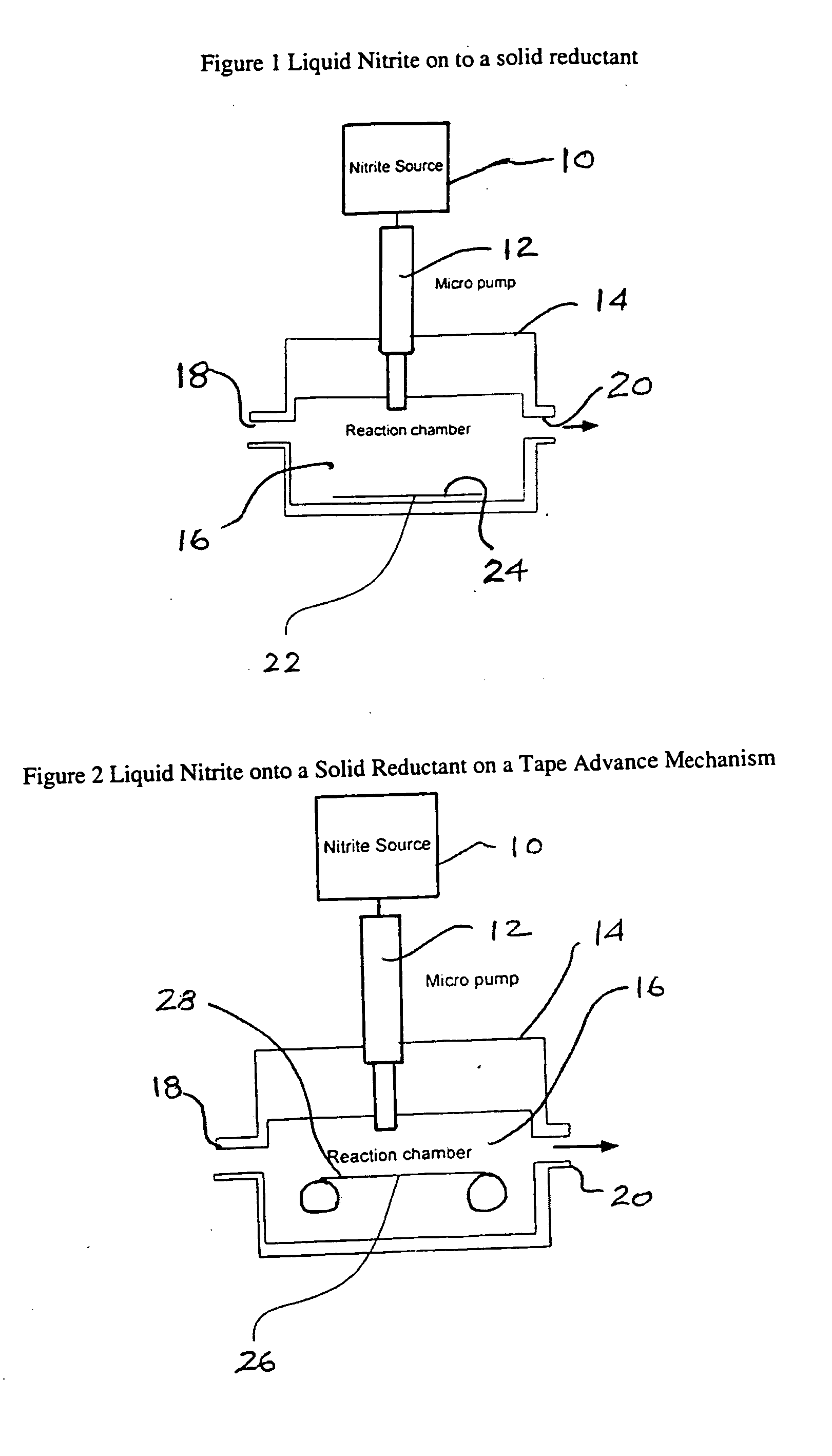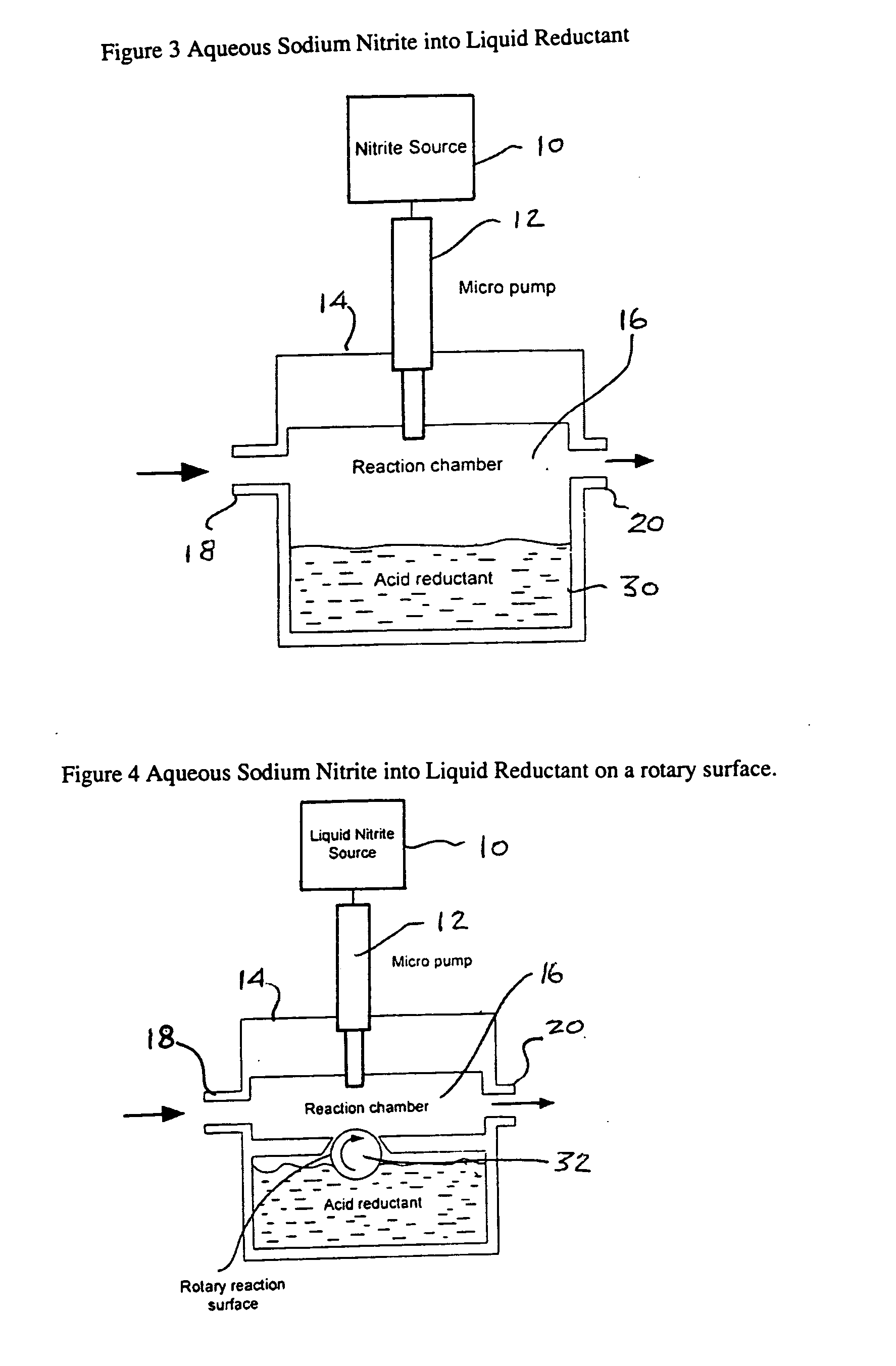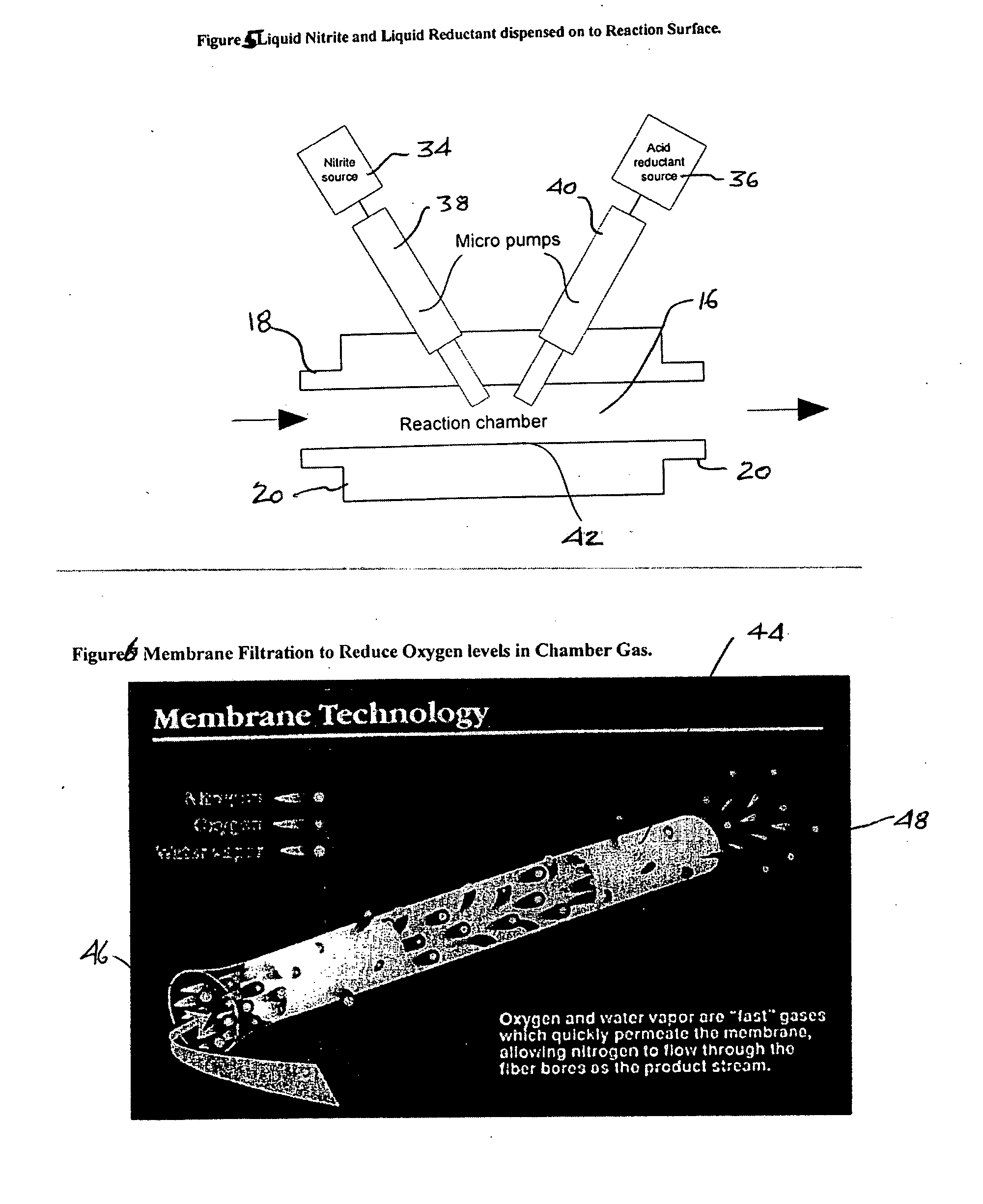Method and apparatus for generating nitric oxide for medical use
a technology for nitric oxide and medical use, applied in the direction of biocide, respirator, drug composition, etc., can solve the problems of not meeting at least one of unable to meet the requirements of a successful portable and safe no generation system, and difficulty in pumping blood through the lungs for oxygenation. , to achieve the effect of low weight, fast and controllable no generation, and low electrical power
- Summary
- Abstract
- Description
- Claims
- Application Information
AI Technical Summary
Benefits of technology
Problems solved by technology
Method used
Image
Examples
example 1
[0065] The first example was carried out using the apparatus of FIG. 3. Aqueous sodium nitrite (1 molar solution) was dispensed directly into a chamber with a reservoir of liquid reductant. The reductant was 1 molar solution of ascorbic acid with 1 molar maleic acid added. The flow through the reaction chamber (Qc) was 0.5 L / min of air and the micro pump delivered 48 nL per pulse every second.
Results:
[0066] Average concentration of NO from the reaction chamber was approximately 123 ppm as shown in FIG. 10.
[0067] The amount of NO being generated can be calculated using Equation 4 where Va is the flow per second in mL given by;
[0068] Va=Qc·1000 / 60=0.5·1000 / 60=8.3 ml / sec.
[0069] NNO=CNO·10−6·4.16×10−5·Va Equation 4
[0070] NNO=123·4.16·8.3 / 100=42.5 nmoles
[0071] The speed of the reaction wasn't that quick with the NO output not showing distinct pulses but blending into a continuous output. During the test, it was noticeable that the reaction was taking place some distance below th...
example 2
[0072] This next example was carried out with the use of the apparatus of FIG. 4 having a chamber design where the rotary cylinder was used to bring a layer of reductant to the top of the chamber where the aqueous sodium nitrite (1 molar solution) was dispensed onto it. This design was to reduce the delay associated with bubbles of NO forming below the surface of the reductant as seen in Example 1. The flow through the chamber was 0.5 L / min of air and in this case the micro pump was delivering 42 nL per pulse. After each pulse, the rotary reaction surface was rotated to bring fresh reductant to the dispensing means. The rotary reaction surface was roughed up with 400 grip sand paper to provide better reductant retention. The reaction chamber size was also reduced in this design to again speed up the response time of the NO output
Results:
[0073] As can be seen on the chart of FIG. 11, the response time of the reaction was a lot quicker with distinct pulses of NO corresponding to ea...
example 3
[0074] In this example, both the nitrite and the reductant were dispensed with micro dispensing valves that were configured to deposit the liquid droplets at the same location at the bottom of the reaction chamber. The apparatus was as described in FIG. 5. In this example, the sodium nitrite was a 2 molar solution and the reductant was 1.5 molar solution of ascorbic acid with 0.5 molar maleic acid. The micro pump delivered 42 nL per pulse of sodium nitrate and the second pump delivered 54 nL per pulse of reductant both were pulsed simultaneously every second. The gas flow through the reaction chamber was 0.360 L / min of air.
Results:
[0075] When the system first started up, the output was peaky as in example 2 but as the liquid built up on the reaction chamber floor the output became more like example 1 with the output having a longer reaction time and an average output of NO being delivered. In the slow steady state condition the average output was 385 ppm NO.
[0076] Based on a gas...
PUM
 Login to View More
Login to View More Abstract
Description
Claims
Application Information
 Login to View More
Login to View More - R&D
- Intellectual Property
- Life Sciences
- Materials
- Tech Scout
- Unparalleled Data Quality
- Higher Quality Content
- 60% Fewer Hallucinations
Browse by: Latest US Patents, China's latest patents, Technical Efficacy Thesaurus, Application Domain, Technology Topic, Popular Technical Reports.
© 2025 PatSnap. All rights reserved.Legal|Privacy policy|Modern Slavery Act Transparency Statement|Sitemap|About US| Contact US: help@patsnap.com



